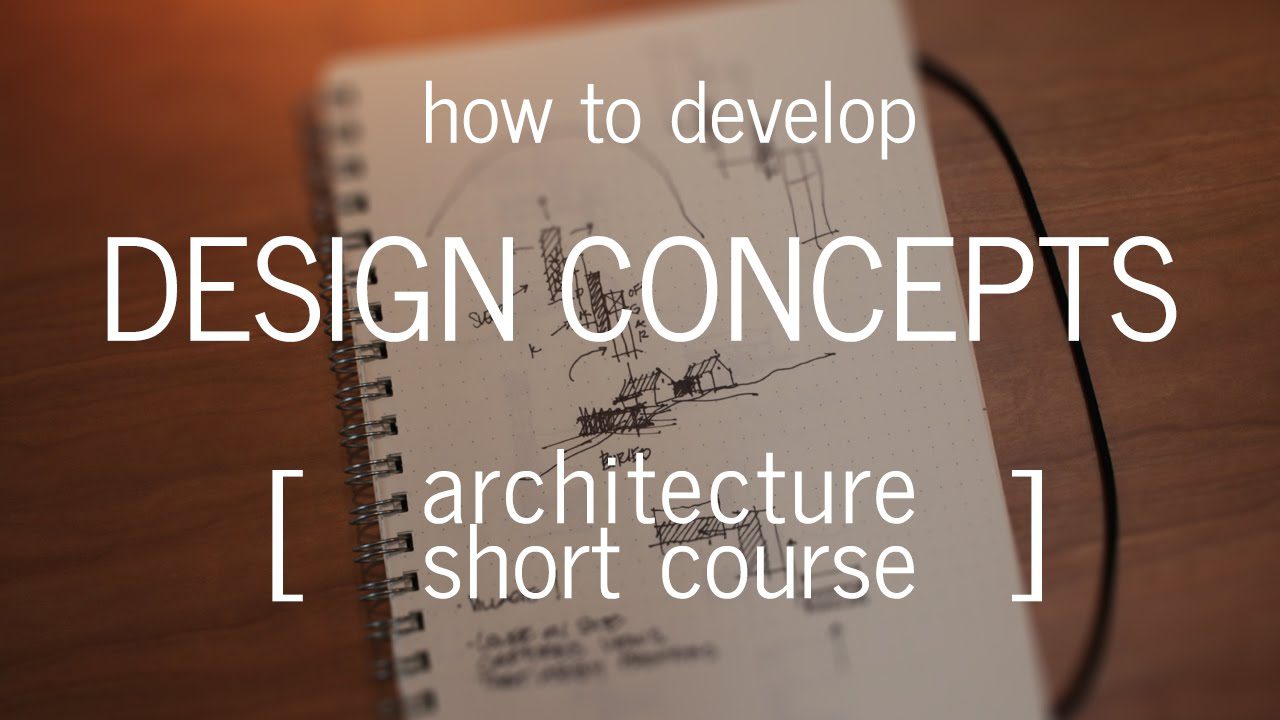建築短期課程: 如何發展設計理念
All architecture begins with a concept. If you’re struggling to find one, curious about what one is, or wondering how architects begin their projects; this short course will walk you through the process I use and some of the techniques I rely on to develop architectural concepts all illustrated with one of my residential projects.
Design is a dialogue, and the concept ensures you have something to talk about. In this video I discuss the precise steps I take when beginning each project and how those steps lead me to an architectural concept.
Before we can develop the concept, we have to first understand the practical constraints. My design process begins only after gathering and assessing all the given parameters for a project. 現在, this primarily consists of three types of information. There’s information derived from the site – things like: local climate, the prevailing winds, the solar aspect, vegetation, neighboring structures, the site’s history, and any unique liabilities or opportunities. The site of course also comes along with legal frameworks for development, which describe where and what we can and can’t build.
The second type of information we’ll gather is from the client. Every client has a set of cultural beliefs and preconceptions, preferences and agendas. Of course, we’ll want to determine their budget, and understand the personality traits and organizational politics which might also shape the design. The client and the building type together determine what architects call, “the program” which is essentially a detailed accounting of all the spaces the building will contain.
And the third type of information I gather is related to the building typology – is it a museum, a home…or a school for example? To learn about a building typology we often conduct an analysis of notable or relevant historical precedents. We want to know the essential problems these types of structures grapple with. Understanding the history of the archetype allows us to approach a problem from a fresh perspective.
All of this is necessary information that we collect for every project. This inventory can also serve as the progenitor for the design concept – our seed idea. 和, rather than shunting creativity, these constraints often incite the creative process.
Concept Inspirations Discussed:
– Site
– Client
– Narrative
– 材料
– Structural
– Mainifestos
– Formal
As with a good film, the setting, the characters, the cinematography, and the plot all conspire to make it what it is. It’s the experience you’ll recall rather than the concept per se. Sure, the concept sets the film in motion and it’s the starting point for all that follows. But this concept – the one or two-line description – can’t possible capture the richness and depth of the finished film…or in our case the architecture. Yet without it, the work is unfulfilling and so it should be clear that the concept is necessary for all our work as architects.
// 我使用的裝備 //
DSLR CAMERA:
* Canon 70D: http://amzn.to/29klz7k
LENSES:
* Canon 24mm f2.8 Lens: http://amzn.to/29l7ac5
* Canon 40mm f2.8 Lens: http://amzn.to/29x2QcI
AUDIO:
* Rode VideoMic Pro (hotshoe mtd.): http://amzn.to/29qlNM3
* ATR-2100 USB (dynamic mic): http://amzn.to/2dFDaKp
ARCHITECTURE GEAR:
* Prismacolor Markers: http://thirtybyforty.com/markers
* Timelapse Camera: http://thirtybyforty.com/brinno
* AutoCAD LT: http://amzn.to/2dxjMDH
* SketchUp PRO: http://amzn.to/2cRcojz
* HP T120 Plotter: http://amzn.to/2dBGf1O
* Adobe CC Photography (Photoshop/Lightroom) 計劃: http://amzn.to/2dhq5ap
STARTUP TOOLKIT:
* 建築師 + 企業家啟動工具包: http://thirtybyforty.com/SPL
-~-~~-~~~-~~-~-
請觀看: “製作場地模型 – 前哨項目”
-~-~~-~~~-~~-~-











